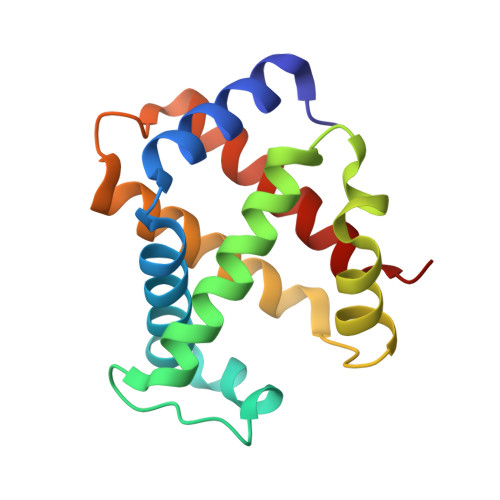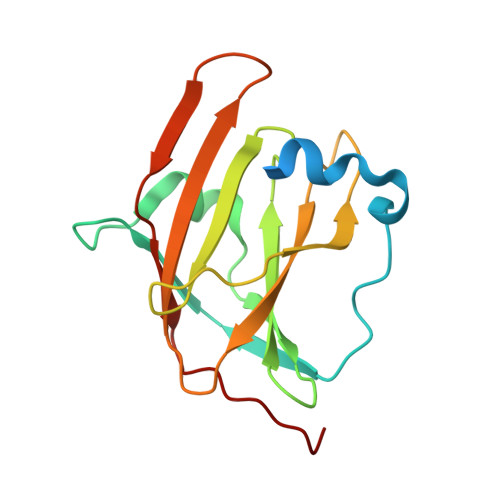Structural basis for hemoglobin capture by Staphylococcus aureus cell-surface protein, IsdH
Krishna Kumar, K., Jacques, D.A., Pishchany, G., Caradoc-Davies, T., Spirig, T., Malmirchegini, G.R., Langley, D.B., Dickson, C.F., Mackay, J.P., Clubb, R.T., Skaar, E.P., Guss, J.M., Gell, D.A.(2011) J Biological Chem 286: 38439-38447
- PubMed: 21917915
- DOI: https://doi.org/10.1074/jbc.M111.287300
- Primary Citation of Related Structures:
3SZK - PubMed Abstract:
Pathogens must steal iron from their hosts to establish infection. In mammals, hemoglobin (Hb) represents the largest reservoir of iron, and pathogens express Hb-binding proteins to access this source. Here, we show how one of the commonest and most significant human pathogens, Staphylococcus aureus, captures Hb as the first step of an iron-scavenging pathway. The x-ray crystal structure of Hb bound to a domain from the Isd (iron-regulated surface determinant) protein, IsdH, is the first structure of a Hb capture complex to be determined. Surface mutations in Hb that reduce binding to the Hb-receptor limit the capacity of S. aureus to utilize Hb as an iron source, suggesting that Hb sequence is a factor in host susceptibility to infection. The demonstration that pathogens make highly specific recognition complexes with Hb raises the possibility of developing inhibitors of Hb binding as antibacterial agents.
- School of Molecular Bioscience, University of Sydney, New South Wales 2006, Australia.
Organizational Affiliation:



















